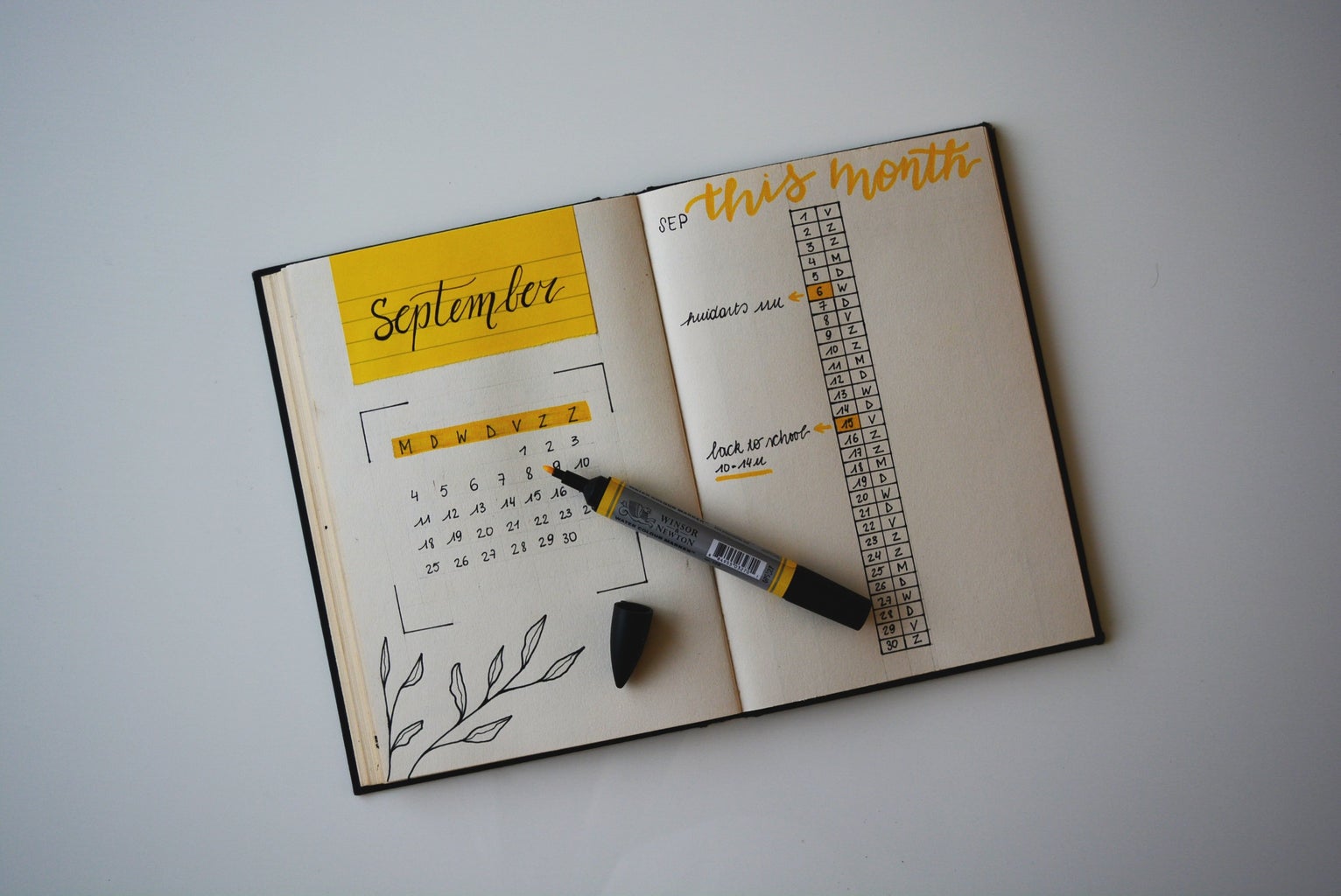Taking time for yourself should always be a priority, especially in a fast-paced environment that thrives on people always working towards their next big thing. Self-care comes in all forms—whether it’s watching an episode of your favorite TV show or ordering your favorite take out, self-care is what makes you feel good. A mechanism for self-care, and maintaining it, is a bullet journal.
A bullet journal is completely up to its creator. For me, this can be the most intimidating aspect of keeping the journal. I am a perfectionist when it comes to art and whenever I do anything creative. If a line in my journal is not perfectly straight or has that perfectly imperfect waviness to it, I might as well give up.
With this being said, there is so much more to the journal than the art. Although sometimes you have to let loose and doodle, whether that’s a star in the corner of each page or a middle school era eyeball. And while creating a journal from scratch is entirely intimidating, that is what’s also the most amazing part. Tashira Halyard, lifestyle blogger at Politics & Fashion, utilizes bullet journaling in her self-care routine.
Bullet journaling, according to Halyard, is not the work of art spreads that you may find on Pinterest. Her philosophy of bullet journaling has the ultimate goal of self-actualization and productivity. Halyard hosted a bullet journaling workshop with Student Life at GW where attendees learned fun and interactive ways to set up their bullet journal.

Tashira uses a bare-bones structure in her journals that she recommends for beginners:
-
Future Log
-
At the start of every bullet journal, Halyard recommends leaving a page or two to track future events. If you know a big project is due at a certain date, or have a close friend’s birthday weekend celebration, you can keep track of those important dates here.
-
-
Vision Board
-
The vision board spread is where you manifest positive energy into your journal. I usually base my vision boards around what I’m working towards in that semester. This is the perfect opportunity to let out your creative side in the journal. I usually dedicate one page to a few drawings or paintings, and the other page to quotes/song lyrics I like, or magazine clippings (always a classic).
-
-
Habit Tracker
-
Halyard has inspired me to include this section in future journals. Most of the time, we recognize the goals we wish to achieve. But how do you go from wanting to achieve a goal to executing steps that could help actually implement it? Your habit tracker section identifies behaviors you can adopt to realize your goal. For example, if your goal is to read more books, you can habit track how many books you read per month, and block off time in the week dedicated to reading.
-
-
Monthly Calendar Spread
-
Before every month, leave two pages to set up an aerial view of the month ahead. This would include a grid calendar to visualize the month and upcoming assignments/events. I usually add a theme to these spreads, which is completely optional. In the spring I’ll doodle flowers and in the winter I’ll draw snowflakes.
-
-
Weekly Spread
-
The heart of the journal is the weekly spread. These pages include all the days of the week with space to write notes. Personally, my bullet journal is full of to-do lists and post-it notes—because I am usually too scared to commit to writing with the definiteness of pens. I usually keep the days on one side of the spread and leave to-do lists and space for my beloved post-its on the other side.
-
Taking the time at the beginning or end of each month to set up your new spread is the best way to maintain your journal. It’s easy to slowly stop utilizing your journal, but blocking off time allows the opportunity to have some alone time to be creative and reflect on your tasks and habits. The physicality of bullet journals offer an amazing asset to organizing a frazzled mind.
All you need to start your journal is pen and paper; the rest is up to you.



